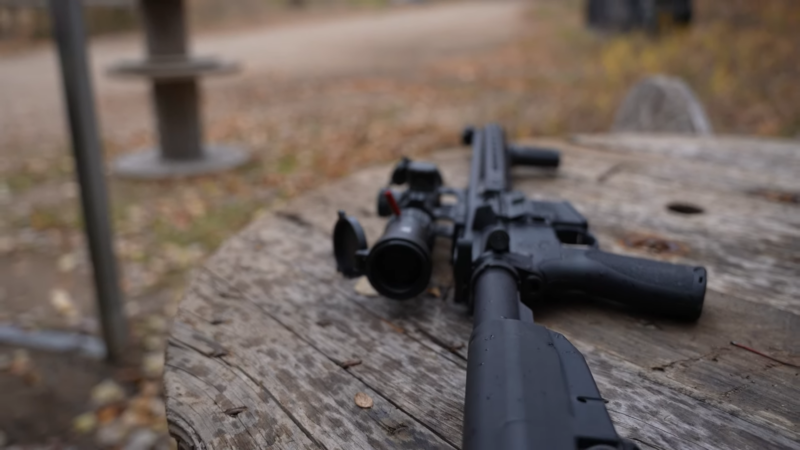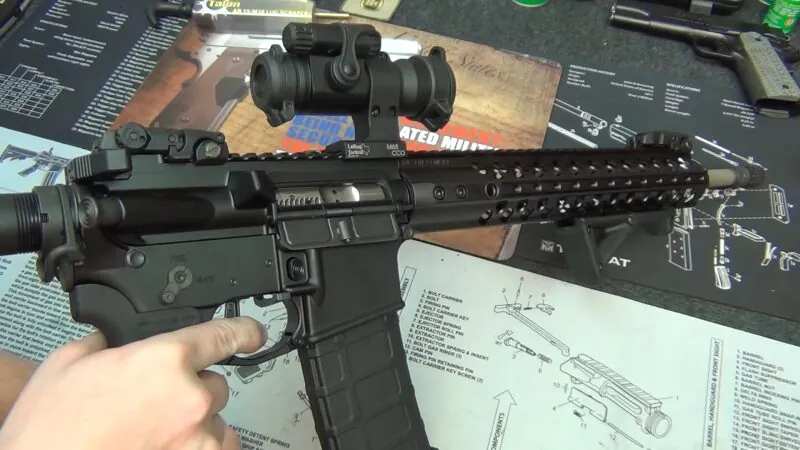The AR-15 rifle is known for its adaptability, easy modification, and a wide range of personalized features. Whether you are an experienced marksman or a beginner with firearms, constructing your ideal AR-15 is thrilling and fulfilling.
This tutorial guides you to personalize your AR-15. It focuses on main parts, implements, and suggestions for crafting a rifle that suits your distinct requirements and likes.
Understanding the AR-15 Platform
The AR-15 is a nimble, air-chilled rifle operated by gas. It’s magazine-loaded and rests on the shoulder when fired. Its structure is highly tweakable, making it a favorite amongst lovers of firearms.
The upper and lower receiver form the AR-15Parts. Every segment has a key part in the rifle’s function and can be adorned with an array of components and add-ons.
Essential AR-15 Parts for Customization
1. Upper Receiver Group
The upper receiver group includes several critical components, each offering unique customization options:
- Barrel: The design of a rifle, particularly its barrel, influences how well it works. Its size and what it’s made from are vital. Most are between 10.5 and 24 inches; smaller ones being portable and larger ones being accurate. Chrome-moly steel and stainless steel are often used materials.
- Handguard: Handguards shield your hands from the barrel’s heat and let you attach extras. You can pick from free-floating handguards, boosting accuracy since they don’t touch the barrel, or drop-in handguards for simple setup.
- Bolt Carrier Group (BCG): The BCG plays a key role in how the rifle works. It helps move the action and load rounds. Top-notch BCGs use stuff like Carpenter 158 steel. They also have strong coatings, like nickel-boron, for long wear and easy use.
- Muzzle Device: Flash suppressors, compensators, and muzzle brakes are all different kinds of muzzle devices. They each do something unique. Some cut down on recoil. Others keep the flash low. Or they steady the rifle.
2. Lower Receiver Group
The lower receiver group houses the firing control components and supports the rifle:
- Trigger: Boosting your trigger can hugely step up your shooting preciseness and coziness. There are two types of triggers. One has an even pull every time – called single-stage. The other kind is the two-stage – it has an initial pull, then a clear cut-off.
- Stock: The stock plays a big role in a rifle’s equilibrium and how comfy it is to shoot. You can find fixed stocks for steadiness or adjustable ones for flex in diverse shooting stances.
- Grip: The grip is essential for maneuverability and coziness. You can get custom grips in many forms, materials, and feels to match what you like.
Choosing the Right Tools and Accessories
Optics and Sights
Optics and sights are essential for aiming and shooting accuracy. Options include:
- Red Dot Sights: They’re great for spotting targets fast, especially in closer ranges.
- Holographic Sights: These make for quick shots, showing a clear reticle. Plus, they work better than red dots when the light’s low.
- Scopes: You can get them fixed or with changing magnifications. These are just right for shooting at a distance.
Lights and Lasers
Adding a tactical light or laser can boost your shooting skills when it’s dim. Make sure they’re fixed tightly and within easy reach.
Slings
An efficient sling provides comfortable transport and swift availability of your rifle. Common choices include two-point and single-point slings, with each delivering unique advantages in matters of movement and steadiness.
Step-by-Step Guide to Building Your AR-15
- Planning and Research: Define the purpose of your build – maybe it’s for home safety, for a shooting match, for hunting, or just for fun. Do some homework! Find the pieces that check all your boxes and stay within your wallet’s reach.
- Acquire Parts: Only buy top-notch parts from trusted makers. Make sure they work together, particularly the top and bottom receivers.
- Assembly:
- Lower Receiver Assembly: First, you’ll need to place the trigger, hammer, and safety selector. Then, don’t forget the magazine catch, bolt catch, and take down pins. Finally, secure the buffer tube, buffer spring, and stock.
- Upper Receiver Assembly: Carefully install the barrel, being mindful of the correct torque. Get the handguard, gas block, and gas tube ready. Finish up by installing the BCG and charging handle.
- Function Check: Conduct a check to guarantee all parts are working right. Inspect the trigger reset, safety switch, and bolt cycling.
- Zeroing and Testing: Bring your AR-15 to the range for optics alignment and rifle testing. Fine-tune the sights as required and ensure its dependable functioning.
Maintenance and Upkeep
Keeping your AR-15 in top shape is key. Wipe it down after each use, oil its moving bits, and check for any wear or breakage. Good cleaning goods and a steady maintenance habit will extend your rifle’s lifespan and guarantee steady performance.
Conclusion
Creating your ideal AR-15 rifle is a satisfying task. You get to customize it to your specific needs. Choose the correct bits, tools, and extras. This way, you can build a gun that tops in performance, comfort, and trustworthiness.
Whether for fun, protection, or hunting, your custom AR-15 shows how flexible and appealing this famous platform is. So, dive in with joy. Take pleasure in making a gun that caters to your very requirements.
Explore a wide selection of AR-15 parts and start building your dream rifle today!













